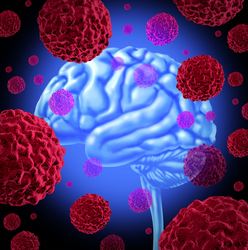MRI for characterisation of brain tumours
Magnetic resonance spectroscopy (MRS) provides information on tissue metabolite profiles that are characteristic of specific brain tumour types. MRS can also be used to probe temperature in the tissue microenvironment and this could prove useful in detecting tumours. The temperature measure has to be accurate to ensure its clinical value. MRS thermometry is a measure of chemical shift between the water position in the spectra and a temperature independent reference. The water position depends on temperature but is also affected by other factors such as ionic concentration and fast chemical exchange. These non-temperature factors may provide additional information about the tissue microenvironment. The EU-funded project PTMETMRI (Probing the tissue microenvironment of tumours by Magnetic Resonance Imaging) investigated such factors to increase the accuracy of temperature measurement and probe the tumour microenvironment. MRS is used to measure metabolic activity in the brain, thus providing multiple metabolite concentration values. The clinical part of the project investigated the temperature measure of two types of common childhood brain tumours as a complementary measure to currently utilised MRS techniques. The initial results showed that ionic concentration and protein content (chemical exchange) affected MRS thermometry measurement. High grade (Medulloblastoma) and low grade (low grade glioma) tumour types were selected to study the MRS thermometry measure. Results showed that the higher grade tumour type was ~1.4°C lower in temperature compared to the low grade gliomas. The results were opposite to expectations, as high grade tumours have greater metabolic activity, which drives the temperature higher. However, significant differences in ionic concentration in the tumours could affect the measurement. In conclusion, the low grade gliomas had a higher concentration of ions, and such aspects of the tumour environment can serve as a probe for tumour function. The PTMETMRI study demonstrated the potential of MRS thermometry to distinguish between tumour types as well as further probe the tumour microenvironment. Importantly, MRS thermometry is complementary to the standard MRI measure with no extra cost. This additional information can help improve the management of patients with brain tumours.
Keywords
Brain tumour, magnetic resonance spectroscopy, tissue microenvironment, MRS thermometry, PTMETMRI

